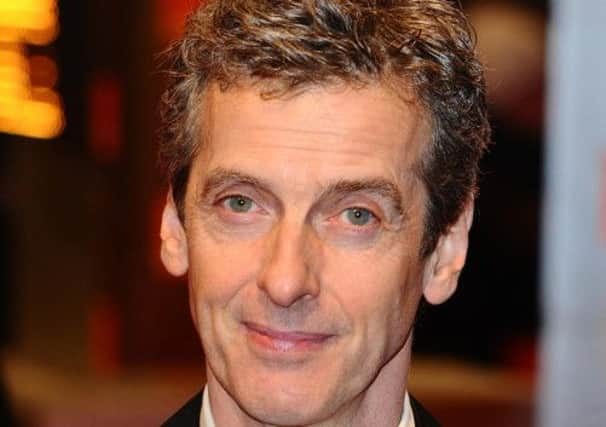The Time Lord still creating TV magic after all these years


SO, after all the speculation and rumour it’s Peter Capaldi. The man best known for his portrayal of the foul-mouthed spin doctor Malcolm Tucker in the BBC comedy series The Thick of It is to be the next Doctor Who.
The general consensus among the show’s fans seems to be that Capaldi, a lifelong fan of the programme himself, is an inspired choice. Doctor Who is pretty much the biggest thing on TV right now and a staggering 6.2 million viewers tuned in on Sunday night to see Capaldi unveiled as the 12th Doctor in a special programme – not bad for a casting announcement.
Advertisement
Hide AdAdvertisement
Hide AdThe role is widely regarded as the most prized in television and this autumn it will be 50 years since William Hartnell first stepped out of the Tardis and introduced the Doctor to an unsuspecting world. Just as film buffs have their favourite James Bond, so each generation has their favourite Time Lord. For some it’s the avuncular Patrick Troughton, or the wild-eyed Tom Baker, while for those of a younger vintage it’s David Tennant or Matt Smith.
But no matter who the Doctor is, the show has continued to captivate TV viewers. We’ve seen him battle against the Cybermen and his nemesis the Master, while successive generations of children have hidden behind the sofa whenever the Daleks appeared on screen. There have been plenty of cult sci-fi programmes over the years, Blake’s Seven and The Prisoner spring to mind, but none have the staying power of Doctor Who. But what makes it so popular? Claire Hampton, curator of film and broadcasting at the National Media Museum, in Bradford, says it’s a unique formula.
“The fact it started off with the premise that you can go anywhere in time and space means you can run wild with story lines and plots.
“You have the Doctor’s character, of course, but you also have these iconic baddies and it’s stood the test of time,” she says. “It’s changed radically over the years and although there are other sci-fi shows on TV, Doctor Who has managed to keep new audiences interested, there’s nothing by comparison.”
Advertisement
Hide AdAdvertisement
Hide AdFor a long time its special effects helped give it a cutting edge, but when Star Wars came out in 1977 it took sci-fi films to another level. By the time Sylvester McCoy took on the role a decade later it was starting to look like old hat, with ropey monsters and sets that seemed as though they were held together with sticky back plastic.
In 1989 decision was taken to “rest” the show and although it made a successful return in 1996 when Paul McGann played the Doctor in a one-off film, it was another nine years before the revamped series returned to our screens, with Christopher Ecclestone in the title role and Billie Piper as his assistant. “It was a risky move, because if it had come back and not worked it wouldn’t have lasted until now. But luckily they had wonderful scripts and a great cast and it has stayed at the top of the ratings,” says Hampton.
Such is the show’s kudos these days that stars like Kylie Minogue, Peter Kay and Richard E Grant are happy to make cameo appearances, while as well as being one of the BBC’s flagship Saturday evening shows, the Doctor Who Christmas specials have become part of the festive TV schedule in the way Morecambe and Wise once were.
It’s often said that television is there to entertain us, something Doctor Who has been doing for almost half a century – and long may it continue.